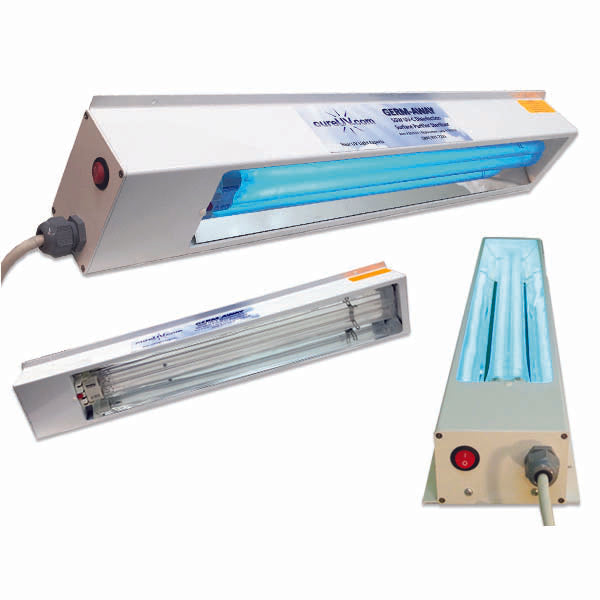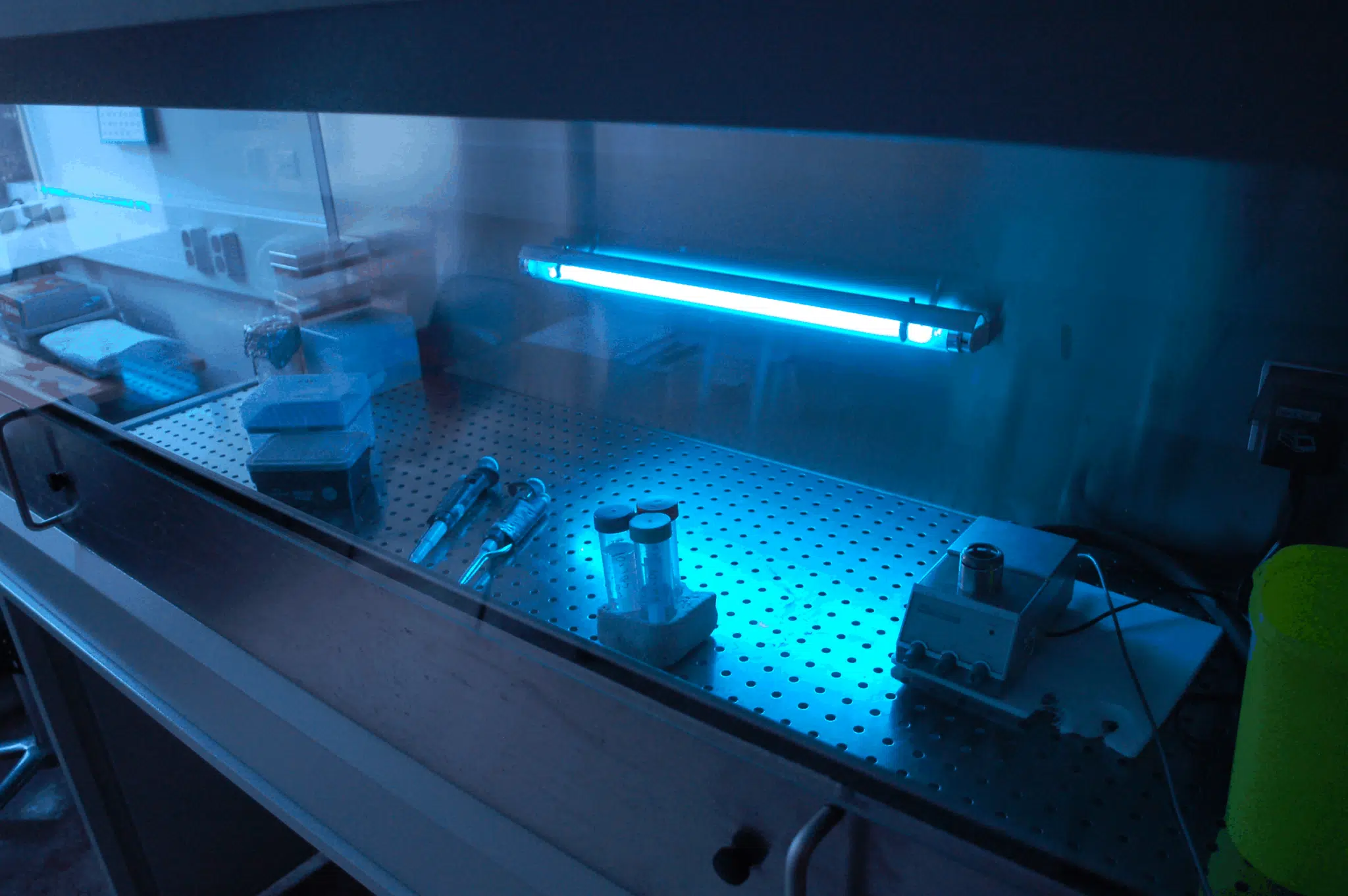Harnessing the Possible of UV Sanitation: Shielding Health And Wellness and Health
UV sanitation, an innovation extensively made use of in various sectors, has verified efficient in getting rid of dangerous virus. From understanding the systems at play to applying this modern technology in our everyday lives, this conversation intends to drop light on the possibility of UV disinfection and its role in protecting our health and wellness and health.
Recognizing UV Sanitation
UV disinfection is a very reliable and widely made use of method for eliminating hazardous microorganisms and making sure health and health. This technique utilizes ultraviolet (UV) light to suspend microbes by damaging their DNA and preventing them from recreating. UV sanitation is specifically effective versus germs, infections, and other microbes that can create infections and illness.
The principle behind UV disinfection is straightforward yet effective. UV sanitation can be used in different setups, consisting of water therapy plants, medical care facilities, food handling markets, and air filtration systems.
One of the advantages of UV disinfection is its capacity to efficiently and effectively eliminate a vast array of virus without the demand for additives or chemicals. Unlike various other disinfection methods, such as chlorine or ozone, UV sanitation does not present harmful spin-offs or chemical deposits into the setting. Additionally, UV disinfection is a non-contact procedure, which indicates that it does not require physical call with the microbes, lessening the danger of cross-contamination.

The Science Behind UV Sanitation
The efficiency of UV sanitation hinges on its capability to interrupt the genetic product of microbes, rendering them not able to replicate and thus removing their hazardous potential. UV, or ultraviolet, radiation is a form of electromagnetic radiation with wavelengths shorter than noticeable light. It is categorized into three kinds: UV-C, uv-b, and uv-. UV-C radiation, specifically, has the fastest wavelength and the highest energy. Since it can permeate the cell wall surfaces of microbes and harm their DNA or RNA., this high-energy UV-C radiation is most effective in disinfection applications.
When bacteria are revealed to UV-C radiation, the power is soaked up by their hereditary product, creating bonds to damage and developing chemical responses that interrupt their capability to replicate. This stops the microorganisms from spreading out and replicating infection. UV disinfection is especially reliable versus germs, viruses, and fungi, consisting of typical pathogens such as Escherichia coli, Salmonella, and Influenza.
The scientific research behind UV sanitation is supported by comprehensive research and researches. It has been shown that direct exposure to an adequate dose of UV-C radiation can attain a high degree of disinfection, typically exceeding 99.9% efficiency in eliminating microbes. It is important to keep in mind that the efficiency of UV disinfection depends on various aspects, including the strength of UV-C radiation, direct exposure time, range from the UV source, and the sensitivity of the microorganism to UV radiation (uv surface disinfection).
Applications of UV Sanitation
Given the considerable research study and effectiveness of UV sanitation in disrupting the genetic material of microbes, it is very important to discover the various sensible applications of this technology. UV sanitation has actually proven to be a beneficial tool in a variety of markets where keeping a secure and tidy atmosphere is necessary.
One major application of UV disinfection remains in medical care settings. UV light can be utilized to decontaminate surface areas, equipment, and also the air in health centers and clinical facilities. This helps to minimize the threat of healthcare-associated infections and makes certain a safer atmosphere for individuals and medical care workers.
Another essential application is in the food and drink market. UV sanitation is made use of to deal with water and remove damaging pathogens, such as E. coli and Salmonella, from the production procedure. uv surface disinfection. This makes certain the security and high quality of the items we eat
UV sanitation is likewise commonly utilized in water treatment plants and wastewater treatment facilities. It is an efficient technique for ruining damaging microorganisms, infections, and bloodsuckers that can be existing in water resources. This assists to supply tidy and risk-free drinking water to communities and shield the environment from pollution.
Additionally, UV disinfection is used in the pharmaceutical sector to disinfect devices and preserve the integrity of items. It is also made use of in laboratories and research study facilities to stop contamination and ensure accurate results.
Advantages of UV Sanitation Modern Technology
One noteworthy benefit of employing UV sanitation innovation is its capability to successfully remove bacteria without using harsh chemicals. This is specifically useful in different settings, such as healthcare facilities, water therapy plants, and food handling markets, where the presence of harmful virus presents a considerable risk to public wellness and security.
Unlike conventional disinfection techniques that rely upon chemicals like chlorine or ozone, UV sanitation innovation utilizes ultraviolet light to target and ruin the DNA of microorganisms, properly neutralizing their capability to recreate basics and create infections. This process not just gets rid of the demand for potentially harmful chemicals however also minimizes the risk of chemical deposit or byproducts staying in the cured environment.

In addition, UV sanitation innovation is ecologically pleasant. As it does not count on the use of chemicals, it eliminates the need for their production, transportation, and disposal, minimizing the total carbon impact connected with sanitation procedures. In addition, UV disinfection systems have a longer life expectancy compared to chemical-based techniques, leading to less frequent replacement and further decreasing waste.
Executing UV Disinfection in Life
To efficiently implement UV disinfection in every day life, organizations and individuals can incorporate portable UV disinfecting tools right into their hygiene routines and cleaning practices. These devices are made to emit ultraviolet light, which has actually been verified to kill or inactivate a variety of bacteria, including microorganisms, infections, and fungi. By using portable UV sanitizing devices, individuals can sanitize typically touched things and surfaces, such as mobile phone, laptop computers, secrets, and doorknobs, decreasing the threat of spreading bacteria and infections.
Along with including portable UV disinfecting gadgets, it is necessary to comply with proper guidelines and referrals for efficient UV sanitation. This includes making certain that the gadget is made use of properly and for the recommended period to attain optimal sanitation outcomes. It is likewise important to focus on precaution, such as putting on protective eyewear and staying clear of direct exposure of the UV light to the skin.

Furthermore, companies can apply UV sanitation technology in different settings to improve hygiene practices. For example, hospitals and medical care centers can use UV sanitation robotics to sanitize patient areas, running movie theaters, and various other high-touch locations. Food handling industries can incorporate UV disinfection systems right into their assembly line to boost food security and prevent contamination.
Final Thought
In conclusion, UV sanitation technology holds wonderful prospective in securing health and wellness and health. By taking advantage of the power of ultraviolet light, it efficiently removes hazardous microbes and decreases the threat of infections. This technology can be used in numerous settings, such as health centers, water treatment centers, and public rooms, offering a effective and secure method of disinfection. With its countless advantages, UV disinfection is a beneficial tool for maintaining a tidy and healthy and balanced atmosphere.
Unlike various other disinfection methods, such as chlorine or ozone, UV disinfection does not introduce click damaging byproducts or chemical deposits into the environment. It is crucial to keep in mind that the performance of UV disinfection depends on various factors, including the intensity of UV-C radiation, exposure time, distance from the UV source, and the susceptibility of the microorganism to UV radiation.
One more benefit of UV sanitation modern technology is its capacity to give continual and quick sanitation. Unlike guidebook cleansing techniques, which can be lengthy and need significant labor, UV disinfection systems can be automated and operate continuously, making certain regular sanitation without human treatment.To properly apply UV their explanation sanitation in everyday life, individuals and organizations can integrate portable UV sanitizing devices right into their health routines and cleaning techniques.
 Haley Joel Osment Then & Now!
Haley Joel Osment Then & Now! Scott Baio Then & Now!
Scott Baio Then & Now! Tia Carrere Then & Now!
Tia Carrere Then & Now! Bug Hall Then & Now!
Bug Hall Then & Now! Batista Then & Now!
Batista Then & Now!